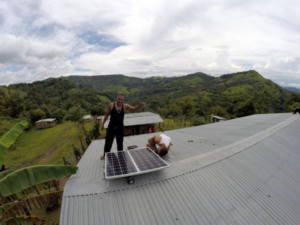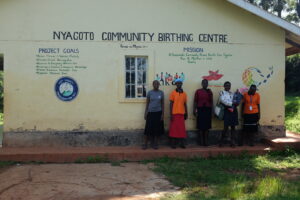Location: Nicaragua
Date: On-going
Partners: Sister Communities of San Ramon
You can help up to 250 people with a donation!
Summary
As the largest country in Central America, Nicaragua has a relatively small population of 5.79 million people for its size. Following Haiti, Nicaragua is the poorest country in Latin America with a GDP per capita that is 56% lower than the world’s average. Poverty is mostly rural-related in which the majority of Nicaraguans living in these areas survive on little more than US $1 per day. These areas are vastly underdeveloped and rely on agriculture, straining the already exploited environment. As a result, the most vulnerable people are farmers living on isolated lands near the agricultural fields.
Due to recent droughts, 80% of Nicaraguans in rural regions don’t have access to clean water. Water-related diseases are the most common causes of illness and death among the poor in developing regions. We at USI understand the critical importance of clean water to the preservation of human health and strive to make clean water available to all Nicaraguans through photovoltaic applications.
Additionally, four out of five Nicaraguans in these areas don’t have access to electricity and turn to kerosene lanterns. The smoke from these kerosene lanterns is a fire danger and causes respiratory infections, lung and throat cancers. Kerosene is also a major barrier to education and production at night due to its poor efficiency. USI is working every day to implement photovoltaic systems that will displace kerosene lanterns and provide a lighting source that promotes education and production after the sun goes down.


Each USI installation provides the basics for a rural community to grow out of poverty through electricity and clean water. USI works with the Nicaraguan Ministry of Education to ensure that a teacher is present to lead adult literacy classes at night for every system that has LED lighting. On average, each community center is used by 60-80 children during the day and will be used by over 40 adults at night. Working with the Water Institute of the UNC Gillings School of Global Public Health, USI will provide water pumping and sanitation technology that the entire community can utilize (over 200 people). Through these projects, USI is growing and improving the Nicaraguan solar industry by working alongside local companies to install systems that are safer and more robust.Finally, USI educates and trains community members about the importance of solar energy and the necessity to properly maintain the system. USI works with the North Carolina Clean Energy Technology Center to provide the most effective seminars and training.
USI identifies companies that are well recognized, trained, and qualified to perform the installation. USI will also utilize the assistance of skilled volunteer groups consisting of people working and studying within the solar industry. Volunteer assistance will be limited to preparing the installation, as only trained personnel will handle the electrical equipment. USI engineers will oversee the design of all systems, domestic and abroad, and will set very strict standards that must be followed by all subcontracted solar energy companies. Each system will be designed with sustainability, efficiency and economic feasibility in mind.
After the installation of the system and our analysis of the company is finished, our team works to identify solutions that will solve any problems and inefficiencies noticed throughout the project. USI will highlight a company’s best practices and offer changes to areas that could be improved in a timeframe that is realistic to the local economy. We compile a report for the company and meet with them one-on-one, working with them to set short-term and long-term goals to solve the problems we have identified.
About our Partners
Sister Communities of San Ramon
SCSRN, a collaboration between San Ramón, Nicaragua and its partner communities in the United States, provides educational opportunities and people-to-people connections through:
- Developing education projects which address community-identified needs in San Ramón.
- Promoting Eco-tourism, hands-on cultural immersion travel, community service and experiential learning.




